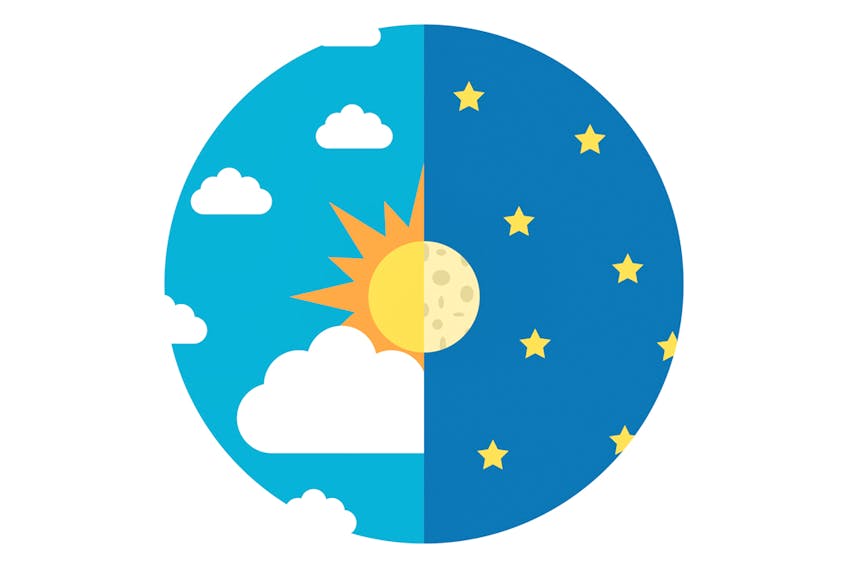
Some people keep a close watch on the sunrise and sunset times each day. If you’re one of those people, you might have noticed something quite interesting earlier this week. On Tuesday, I got a call from Lorraine in Antigonish N.S. She noticed that we had more daylight than darkness on the day of the equinox. Great observation!
Lorraine is not the only who is under the impression that we get exactly 12 hours of daylight and 12 hours of darkness on the day of the vernal or spring equinox, but that’s not exactly the case!
Let’s take a look at the day of the equinox.
On any other day of the year, the Earth's axis tilts a little away from or towards the Sun. But on the two equinoxes, the Earth's axis tilts neither away from nor towards the Sun. The equinoxes occur the moment the sun crosses the celestial equator – the imaginary line in the sky above the Earth’s equator. This happens in March and September every year.
On these two days, the geometric centre of the sun is above the horizon for 12 hours, so you would think this would indicate that the length of the day or hours of daylight would be the same.
Not quite. “Sunrise” is defined as the instant when the upper edge of the sun's disk becomes visible above the horizon – not when the centre of the sun is visible. In the same sense, “sunset” refers to the moment the upper edge disappears below the horizon. At both instances, the centre of the sun is below the horizon, and therefore the equinox day lasts a little longer than 12 hours.
Even if day and night aren’t exactly equal on the day of the equinox, there are days when day and night are both very close to 12 hours. This date depends on the latitude, and can vary by as much as several weeks from place to place.
Here in the Maritimes for example, the day of equal day and night was March 17.
Depending on where you live, you’ve been gaining a little more than three minutes of daylight each day since then.

And finally, you might like this little tidbit. It might not be as handy now that everyone has a compass on their phone, but … on the day of the equinox, the sun rises due east and sets due west.
Cindy Day is chief meteorologist for SaltWire Network. Get your regional forecast at weatherbyday.ca, and follow the links for your drawings, photos and more from Cindy Day.









